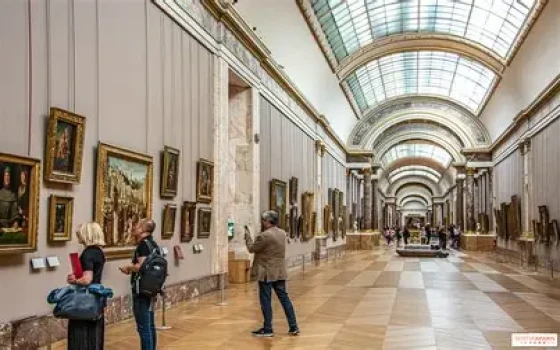
Italy Develops AI Systems to Protect Its Museums and Heritage After the Louvre Attack

- Europe and Arabs
- Tuesday , 21 October 2025 6:43 AM GMT
Rome - Paris: Europe and the Arabs
Following the audacious robbery that rocked the Louvre Museum in Paris, the Italian Ministry of Culture announced a project to develop artificial intelligence-based security systems aimed at protecting cultural heritage from any potential threat.
The Italian Ministry explained in a statement that its management of the museum is working on implementing two major pilot projects focused on protecting archaeological heritage, with funding exceeding 70 million euros (approximately $82 million), sourced from European resources.
The funding was approved for 2024, and the new initiatives will be dedicated to developing advanced prevention and monitoring tools based on artificial intelligence, big data analysis, and enhancing cybersecurity.
The Ministry stated that the systems under development will enable intelligent analysis of video footage inside museums, capable of detecting abnormal behavior and suspicious movements in real time, while strictly respecting privacy laws.
The algorithms will also be able to issue early predictive alerts to aid rapid intervention, in a move aimed at preventing any theft before it occurs. According to the Brussels-based Euronews website, which added under the title "A Robbery in the Heart of Paris," "This announcement comes less than 24 hours after a Hollywood-style robbery by four masked thieves at the Louvre Museum in France. The thieves broke into the museum on Sunday morning using a ladder and an electric saw, smashing through the second-floor windows and stealing eight pieces of jewelry dating back to the 19th century in just seven minutes, before fleeing on motorcycles through the streets of Paris.
The incident, which occurred around 9:30 a.m., just half an hour after the doors opened to visitors, sparked controversy. French President Emmanuel Macron commented on the X platform on Sunday evening, confirming that "the jewels will be recovered and the perpetrators will be brought to justice," promising to make every effort to achieve this.
A Long History of Thefts
This was not the first incident in the Louvre's history. In 1911, an Italian decorator named Vincenzo Peruggia stole a painting The Mona Lisa, before he was later arrested and the painting was recovered.
Another incident occurred in 1956 when a visitor threw a stone at the same painting, causing some of its paint to peel off near the left elbow. This prompted the museum to place it behind permanent protective glass.












No Comments Found